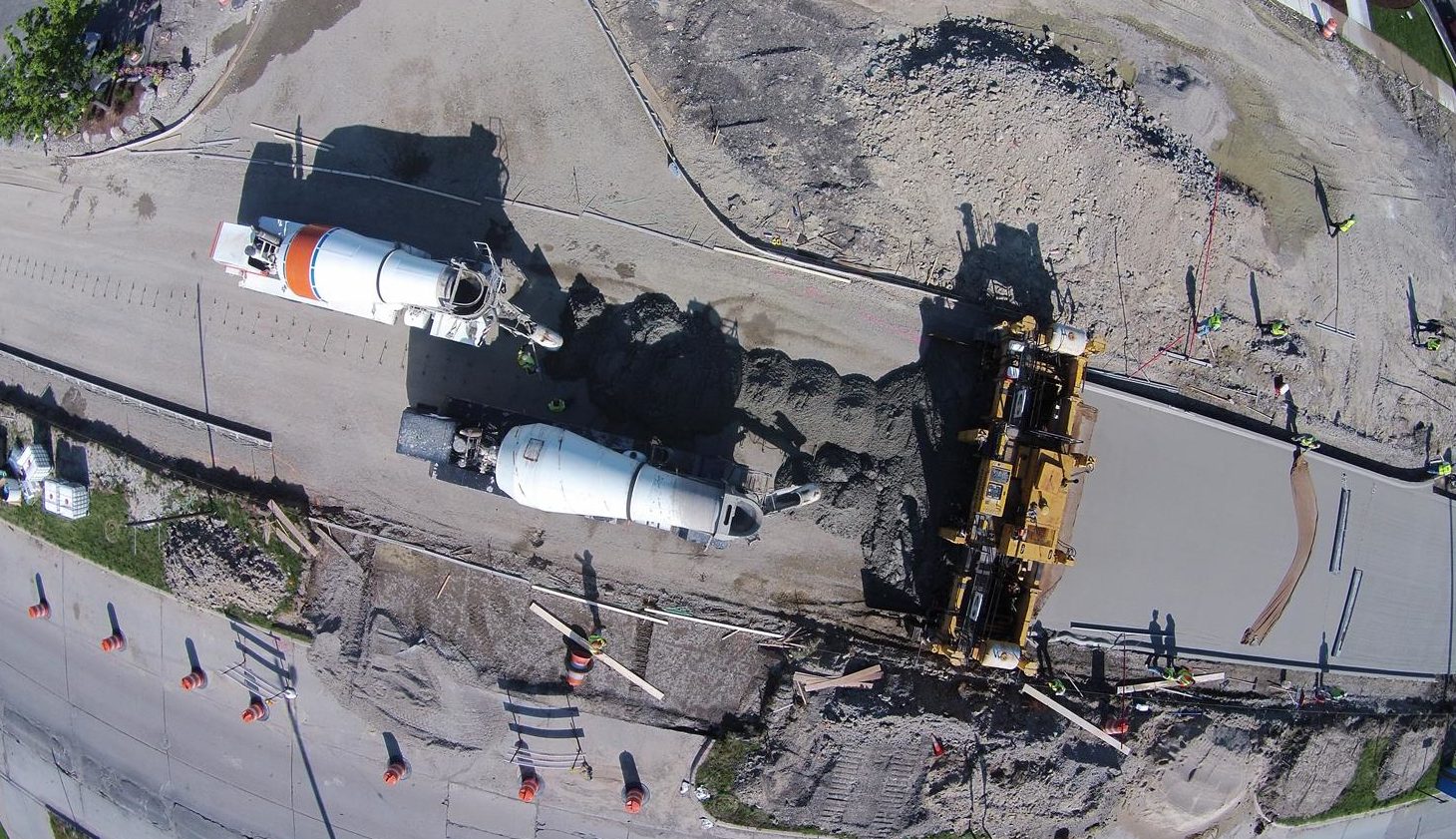After years of debate, Michigan now has a $1.2 billion road funding bill in place to address the deplorable condition of the state’s major roads and highways, which some experts call the worst in the nation. Although the voters previously rejected a legislative proposal, virtually every Michigan resident agrees that it’s past time that the roads are repaired and that a strategic plan is implemented.
While the road funding debate transpired at the state level, local municipalities and road building experts have needed to continuously repair, rehabilitate or replace their roads – despite the lack of a cohesive state-wide funding plan. Using a combination of new technology, holistic infrastructure planning and lessons learned, this team of public and private expertise has implemented strategic pavement management plans, leveraging scarce funding.
“Tight budgets have required that we look at every component of the road building equation to ensure that we maximize the potential fix,” says G2 Consulting Group’s Jim Berry, a veteran civil engineer with 30 years of road building experience. “There has been constant innovation in road evaluation and construction in recent years. Working with our engineering partners and local municipalities, we now look at roads on a full network basis instead of an individual project basis to help communities thoroughly evaluate their priorities.”
Local community road planners agree. “It’s often a question of total reconstruction versus extending the life of current surfaces,” says Leigh Schultz, Southfield’s city engineer. “We look to the state to provide the long term strategy but we’ve continued to aggressively improve Southfield’s roads.”
According to Schultz, after Michigan’s Prop 1 Road Improvement Plan failed, the City of Southfield passed a $99 million bond for local improvement projects. “Our residents understand the value of good roads to attract economic opportunities. In addition to addressing critical needs, the bond has helped us be aggressive in seeking federal grants that often require matching funds from the municipalities themselves.”
Paul O’Meara, Birmingham City Engineer, agrees with the importance of working with the community to determine project priorities. “New technologies like Roadsoft have become great tools for road analysis and tracking,” he said. “We drive each and every street each year to visually inspect road conditions, and we use a comprehensive database on road conditions to help us chart our future plans.”
Berry agrees that road planning technologies add tremendous value and also stresses the importance of visual inspections of road surfaces. “It’s equally important to analyze and evaluate below-the-road factors — soil and pavement conditions, drainage, and the level of deterioration a road has experienced over a time period — to determine the best approach within an environment. This information is key to prudent decision making. Sometimes it makes more sense to repair a slightly damaged road as opposed to a rip-and-replace of a different road in worse condition. Considerations include the amount of traffic using the road and predictive models for future deterioration. With the huge amount of work that needs to be done across Michigan communities, we all want to get the most out of every dollar spent.”
In the case of Southfield, that has meant prioritizing road projects where there was also a need to repair the water main. “A lot of infrastructure was built around the same time and is now in need of repair. By looking at our needs holistically, we’re able to find ways to bundle projects and stretch our dollars,” said Schultz.
In Birmingham, O’Meara says that stretching dollars is often about selecting the right materials. “Asphalt is less expensive than concrete, however the life expectancy is maybe 20 years on asphalt versus 50 for concrete. So, if you take the long view, the total life cycle cost of concrete is often the more economical choice.”
In addition, the actual materials used to make roadways has improved over the years. “Concrete mixes in the late 1990’s and early 2000’s had elements that caused a chemical reaction leading to premature cracking, shares Bruce Wilberding, Principal and lead of G2’s Construction Engineering Services. “However, the new mixes are the best we’ve seen in decades. Asphalt is improving also – nearly 100% of black asphalt is recyclable.”
Local communities, engineering firms and their suppliers understand they can only be successful by working together to address critical issues efficiently and cost effectively. New modeling technologies and materials are demonstrating long lasting results that, ultimately, provide a significantly improved drive quality experience for Michigan motorists.
The Michigan road industry has learned a lot of valuable lessons over the recent ‘lean’ years. Now that the state has a funding plan in place, city engineers and their partners can be even more effective in their strategic approaches to deploying road dollars. Berry captures the cautious optimism expressed at the local agency level, “Hopefully, we’ve turned the corner and Michigan roads will see significant improvement over the coming years.”
